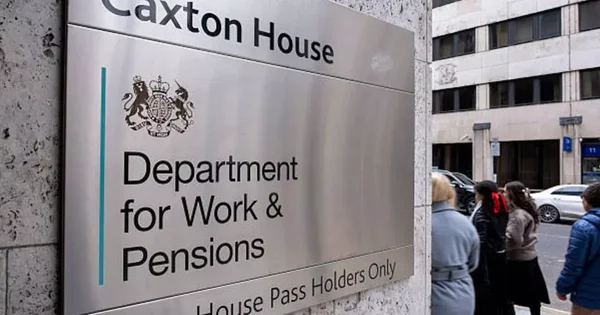To the point
Stamp duty must be paid to HM Revenue & Customs (HMRC) within a set timeframe after completion. The amount you’ll pay depends on the property price, the portion of the purchase price above certain thresholds, and when you complete your purchase. Rates can change overnight, catching buyers off guard. The government announces changes to stamp duty rates, which can affect when and how much you pay stamp duty.
Stamp duty payment is required and must be completed promptly to avoid penalties.
Need clarity on exactly when stamp duty rates change without wading through HMRC jargon? Pie tax, the UK’s first personal tax app, keeps you updated with real-time tax information that’s actually easy to understand. Or if you’re just here to get to grips with it all, let’s break it down!
When Does Stamp Duty Change? Common Timing Patterns
Stamp duty typically changes following Budget announcements from the Chancellor. These usually happen twice a year in Spring (March) and Autumn (October/November). Major stamp duty changes are often scheduled for the end of March, such as March 2025, with new rates taking effect from April.
When changes are announced, they might take effect immediately, from midnight that day, or from a future date. The government sometimes gives just hours’ notice.
Other times you’ll have weeks to prepare. I remember frantically calling clients at 6pm after a Budget, advising them to complete their purchases before midnight to save thousands. Buyers often rush to complete property transactions before March 2025 to benefit from the current stamp duty rates, as completing before the deadline can result in significant savings.
Remember, it’s your completion date that matters, not when you exchange contracts. With stamp duty changing in April 2025, buyers need to be aware of which rates current stamp duty or new rates apply at the time of completing their purchase.
Emergency changes can happen outside the regular Budget cycle too. We saw this during the pandemic when temporary holidays were introduced with little warning. Current stamp duty applies until the new rates take effect, and buyers must pay SDLT based on the rates in force at their completion date.

Recent Stamp Duty Change Timeline
July 2020 saw a major stamp duty holiday introduced as a Covid response measure. This temporarily raised the nil-rate band to £500,000, saving buyers up to £15,000. Stamp duty thresholds
First-Time Buyer Relief Changes
First-time buyers often benefit from special stamp duty relief, but these thresholds change too. The government typically announces these changes during major Budget statements. Changes to first time buyers relief are often government announced during major fiscal events.
Sometimes they appear in the run-up to general elections as part of housing policy. In 2017, first-time buyer relief eliminated stamp duty on properties up to £300,000. First time buyers relief applies only up to a maximum purchase price, and buyers must pay stamp duty on the portion of the purchase price above this limit.
In 2022, this threshold rose to £425,000, showing how these figures can jump significantly. Buyers using a shared ownership scheme are also subject to these relief limits. Changes to first-time buyer relief often reflect housing market conditions.
They also address affordability challenges in different regions. Changes to relief can impact a first-time buyer's ability to get on the property ladder, especially if their mortgage options are limited. These adjustments can happen with varying amounts of notice, from immediate to several months.
These changes can affect SDLT liability for first-time buyers, depending on the timing and purchase price.
Buy-to-Let and Second Home Stamp Duty Changes
The 3% surcharge for additional properties was introduced in April 2016 and has remained fairly stable. However, the thresholds it applies to have shifted over time. This extra tax now applies at a higher rate for second home buyers and those purchasing investment property or a holiday home.
Buy-to-let investors need to watch both the base rates and the surcharge rules. Either could change in any Budget announcement. Both home buyers and home movers who are UK residents may be subject to these surcharges when purchasing additional properties.
The government sometimes targets landlords specifically in tax changes. Additional property stamp duty rules might change independently of main residence rates. The cost of buying a freehold property as an investment or second home has increased due to these changes.
Changes affecting investors often come with longer notice periods than other stamp duty adjustments. This isn’t guaranteed, however, so vigilance is essential. Second home buyers and those purchasing holiday homes are subject to higher stamp duty rates, which can significantly increase the overall cost of the transaction.

How to Plan Around Stamp Duty Changes
If you’re house-hunting when a Budget is approaching, be aware that stamp duty changes could affect your costs within weeks. Completing your purchase before a rate change can help you avoid higher costs. Build some flexibility into your plans.
The average property purchase takes 2-3 months, so timing the market perfectly for stamp duty changes is tricky. Talk to your solicitor about timing strategies. Remember, the portion of your budget allocated to stamp duty payment may need to increase if rates rise.
Sometimes delaying completion until after a beneficial change can save thousands. Equally, you might need to rush completion before disadvantageous changes take effect. Planning your stamp duty payment in advance can make the process more stress free.
Your conveyancer can often help speed things up if needed. All stamp duty must be paid promptly after completion to avoid penalties. Keep an eye on property news in the weeks before Budgets, as leaks about potential changes are common.
Consider building a contingency fund into your budget. This can help absorb unexpected stamp duty increases if you’re caught by surprise. Buyers purchasing property may be subject to higher costs if caught by surprise rate changes.
Pie tax: Simplifying when does stamp duty change Tax
Keeping track of stamp duty changes shouldn't require constant vigilance of government announcements. Nor should it mean deciphering complex tax jargon.
Pie tax, the UK's first personal tax app, sends timely alerts when stamp duty changes are announced. You're never caught out by sudden threshold shifts.
Our calculator shows exactly what you'll pay based on current rates and your circumstances. We even factor in announced future changes based on your expected completion date.
We explain in plain English how upcoming changes might affect your purchase. This includes personalised advice on timing strategies that could save you money.
Fancy seeing how it works? Just pop over to Pie tax to explore our stamp duty tools.









